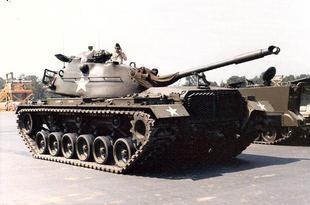
If a picture is worth a thousand words, then photojournalism's effect on outcome of war is immeasurable.
The Power of Photojournalism
Historians trace the origins of photojournalism to the Crimean War. In the mid 1800s, Romanian photographer Carol Szathmari captured the first glimpses of what really transpires on the front lines during battle. Szathmari's disturbing photographs were distributed globally and changed the way most citizens viewed the bloody conflicts that were taking place around the world.
Fast-forward to the 21st century. Advances in technology help bring the horrors of war into our living rooms each night via televisions, Internet, radios and newspapers. Photojournalism's influence on how people perceive global unrest has changed dramatically since the Crimean War. These days, media consumers are bombarded with 24-hour cable news channels that broadcast real-time images straight from the battlefield. The first images that television news crews transmitted to viewers in March 2003 showing the U.S. invasion of Iraq were unprecedented. Today, live pictures of troops racing across the deserts in southern Iraq and Afghanistan are almost second nature, even though they have helped shape photojournalism history.
About the Photojournalism Effect on Outcome of War
The media's coverage on the war against international terrorists, while often spectacular, raises a number of questions about the photojournalism effect on outcome of war. What are the responsibilities of the press in wartime? Are journalistic values such as objectivity, and the relationships among the media, the public and the government being preserved?
To answer those questions, one must examine the pros and cons of having photojournalists cover the war so closely:
Positive Effects
- Real time: When the United States launched air strikes at Baghdad in 2003, marking the beginning of the war, several photojournalists were already embedded with military units. Consequently, these war photographers were able to transmit unprecedented images in record time. In fact, CNN viewers in the United States and around the world actually knew about the attack on Baghdad before any of the soldiers in the field, thanks to sophisticated satellite technology. Advances in video technology have changed the way the media reports war stories and the way people perceive the conflict.
- Heighten awareness: Tens of millions of viewers have tuned in to watch war coverage on television since the Vietnam War. Likewise, back in the 1940s, people clamored to get their hands on newspapers, which provided information about World War II air raids. According to Nielsen Media Research, 70 percent of Americans rely on television to get updates on international conflicts. Clearly, the numbers indicate that citizens are interested in viewing material embedded photojournalists record. What's more, government officials note that the heightened awareness contributes to Americans being informed citizens.
- Shape perceptions: Photojournalists have the power to shape people's perceptions on certain subjects by employing different photo techniques. Lighting, angles and symmetry contribute to the overall feel of a picture. Collectively these images help mold viewers perceptions on major events, such as war. For example, Arabs and Muslims get a dramatically different narrative of the war than Americans. Whereas the U.S. media focuses on showing images of powerful American military armadas, the Arab and Muslim press tend to focus on the destruction and suffering caused by American forces.
Negative Effects
- Oversaturation: Some critics believe technology has led television and the Internet to focus on images instead of information. They note that reports from correspondents in the field provide only "tiny microviews" of the war. Seeing small slices from the frontlines could lead to misunderstandings about the big picture.
- Desensitizing: Some photojournalists and media critics fear that oversaturation of the war tends to distance viewers from the reality of war. For example, the bombing of Iraq was shown on network and cable channels night after night. Rooftop cameras linked to satellites beamed shots of explosions and fires to viewers around the world. Photojournalists were given the task of capturing as many bombs and missiles in the U.S. arsenal as possible. Consequently, some critics argued that this continual bombardment of weapons photos contributed to the notion of war as a video game and thus stripped the conflict of its humanity.
- Graphic footage: During the Iraq war, some television photojournalists were mandated to sanitize their shots so they could be shown to mass audiences. A study by the Project for Excellence in Journalism of war coverage by ABC, CBS, NBC, CNN and Fox early in the Iraq conflict found that about half the reports from embedded photojournalists showed combat action, but not a single story featured pictures of severely injured military personnel. Casualties were shown from afar on television, but a number of newspapers and magazines featured graphic still photos of wounded soldiers on the frontlines.







